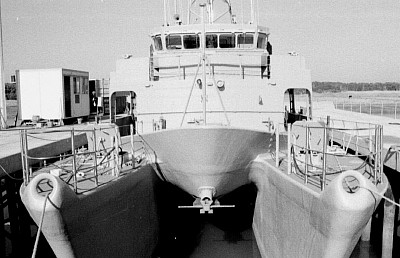The Beginning
The Idea
Rushcutter was ordered in January 1983 as part of an initial two ship build using a prototype glass reinforced plastic catamaran construction.
The genesis of the design was to have a vessel able to conduct mine hunting operations locating and destroying seabed mines in depths up to 90 metres.
It was to be cheaper than a conventional mine countermeasures vessel and able to be quickly produced in Australia.
The Mine Hunter Inshore (MHI) was to complement the intended larger replacements Ton Class ships.
In view of the Bay Class nomenclature, the ship was named after Rushcutters Bay in Sydney.
It was envisaged that a further four additional follow on vessels would be built.
The ship was designed by the Royal Australian Navy in conjunction with the Department of Defence.
The design was deemed a revolutionary step away from traditional designs for mine countermeasure platforms, with a number of improved features present in the design.
These included the ‘catamaran style’ hull to provide stability and a larger deck area for its size, greater manoeuvrability than a mono hull, and the ability to install heavier and bigger loads high up thereby reducing magnetic and acoustic signatures.
The foam sandwich construction style was considered easy to build and maintain and it minimised the magnetic influence and noise transmission. It also provided good thermal insulation properties.
Built by Carrington Slipways at its Ramsay Fibreglass Facility at Tomago, New South Wales, Rushcutter was laid down in August 1984 and launched 21 months later. Along with sister ship HMAS Shoalwater, the tender cost was $26.6m.

